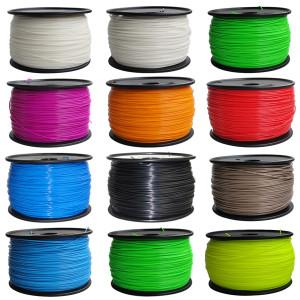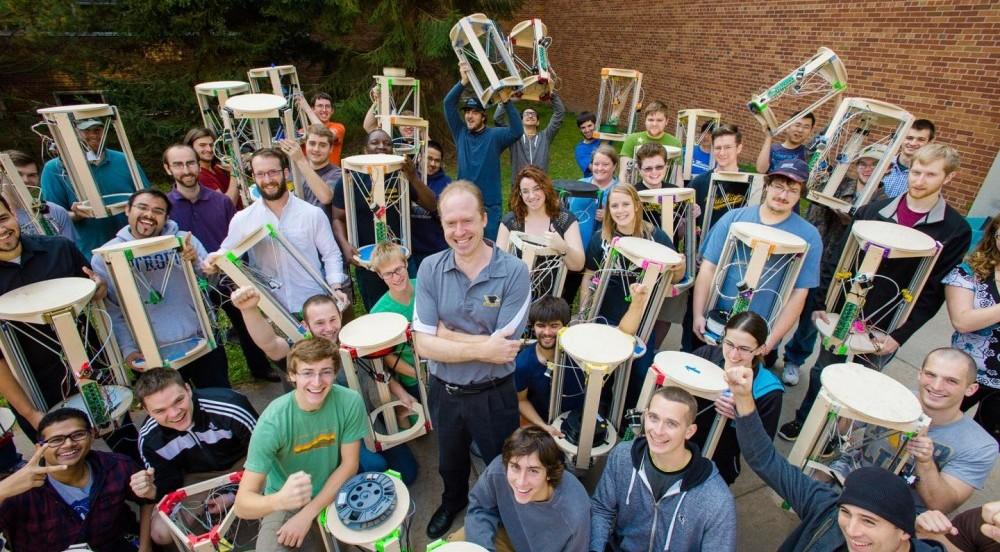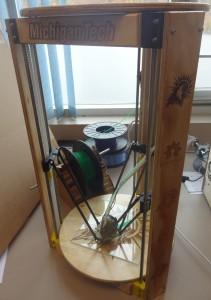Shots Fired: The 3D Printing Materials IP War Has Begun as Joshua Pearce Releases Algorithm for Obviousness
 As 3D printing becomes more successful and dependable, the ability to fabricate just about anything at home without the need of mass production is virtually inevitable. This ability to circumvent traditional manufacturing will essentially decimate current intellectual property (IP) law and grant consumers more freedom than ever before. It should go without saying that 3D printing complete consumer products, especially complex ones like electronics, isn’t exactly going to happen tomorrow. But that has always been the endgame of 3D printing as a concept, and the momentum is most certainly there, pushing both the 3D printing industry and society as a whole in that direction. But that doesn’t mean that IP lawyers or overly aggressive capitalists will pack it up and get new jobs, they will simply shift their focus on to something else that can still be patented and controlled–like 3D printing materials.
As 3D printing becomes more successful and dependable, the ability to fabricate just about anything at home without the need of mass production is virtually inevitable. This ability to circumvent traditional manufacturing will essentially decimate current intellectual property (IP) law and grant consumers more freedom than ever before. It should go without saying that 3D printing complete consumer products, especially complex ones like electronics, isn’t exactly going to happen tomorrow. But that has always been the endgame of 3D printing as a concept, and the momentum is most certainly there, pushing both the 3D printing industry and society as a whole in that direction. But that doesn’t mean that IP lawyers or overly aggressive capitalists will pack it up and get new jobs, they will simply shift their focus on to something else that can still be patented and controlled–like 3D printing materials.
But the 3D printing industry does have a secret weapon. It was founded on the concepts of open source technology and the community that did so is still here. Open source advocate Dr. Joshua Pearce is a materials scientist himself, so he is fully aware of how easily patent trolls can start combing through the growing list of 3D printing materials and restrict innovation for decades if left unchecked. He’s noted that patents related to 3D printing are on the rise, and the freedom of the maker movement is on the line. There is already a company making moves to patent all of the various thermoplastics typically used by 3D printers. If left unchallenged, that could set the industry back for decades and even derail the advances that have already been made.
 Thankfully, Pearce was ready. This week he and his research team at Michigan Technological University published a new study providing an open-source algorithm that identifies the obviousness and prior use of 3D printing materials. Current patent law prevents obvious technology or inventions from being patented, which is why things like radios, clocks and books can be made by anyone. By developing a way to identify obvious inventions within the 3D printing industry, such as thermoplastics and filaments, the open source community can effectively prevent patent trolls looking to innovate via money rather than actual innovation from succeeding.
Thankfully, Pearce was ready. This week he and his research team at Michigan Technological University published a new study providing an open-source algorithm that identifies the obviousness and prior use of 3D printing materials. Current patent law prevents obvious technology or inventions from being patented, which is why things like radios, clocks and books can be made by anyone. By developing a way to identify obvious inventions within the 3D printing industry, such as thermoplastics and filaments, the open source community can effectively prevent patent trolls looking to innovate via money rather than actual innovation from succeeding.
“Specifically the study provides a new approach for determining obviousness of 3D printing materials making it nearly impossible to patent 3D printing materials in the future. Although the algorithm may be useful for materials scientists to develop new 3D printing materials, its real strength is that it makes the use of any known material or combination of materials obvious. Patents are not allowed for obvious inventions. So this effectively kills patent trolls before they are born in the most fundamental 3D printing innovation space,” Pearce told us via email.
 Back in 2013, while developing his revolutionary RecycleBot 3D printer that recycles discarded milk jugs and other plastics into usable 3D printing filament, Pearce also released the original algorithm – ironically at this point – on Thingiverse. With the help and input of the open source community, and Thingiverse users, Pearce has published his improved and updated research as an academic paper called A novel approach to obviousness: An algorithm for identifying prior art concerning 3D printing material.
Back in 2013, while developing his revolutionary RecycleBot 3D printer that recycles discarded milk jugs and other plastics into usable 3D printing filament, Pearce also released the original algorithm – ironically at this point – on Thingiverse. With the help and input of the open source community, and Thingiverse users, Pearce has published his improved and updated research as an academic paper called A novel approach to obviousness: An algorithm for identifying prior art concerning 3D printing material.
“This is really important now as makers are building recyclebots or buying commercialized desktop plastic extruders that fabricate 3D printing filament from recycled or virgin materials. With the combination of recyclebots and various syringe pump designs for RepRaps, the material selection available for consumers who produce products using 3D printers is expanding rapidly. Now we can rest assured it will stay that way,” continued Pearce.
 Pearce’s academic paper thoroughly breaks down the concepts of the algorithm, how it works and why it needs to be used. It soberly and without pulling any punches explains how aggressive patenting will hold the 3D printing industry back and artificially restrict innovation. It also presents two related case studies that prove it’s an effective and viable method of preserving the rule of current patent law and open source claims on obvious 3D printing related inventions and materials.
Pearce’s academic paper thoroughly breaks down the concepts of the algorithm, how it works and why it needs to be used. It soberly and without pulling any punches explains how aggressive patenting will hold the 3D printing industry back and artificially restrict innovation. It also presents two related case studies that prove it’s an effective and viable method of preserving the rule of current patent law and open source claims on obvious 3D printing related inventions and materials.
The first case study explains how it can be used to refine the search for 3D printable materials with specific applications and properties. Not only is this a valuable tool for new companies looking for public domain 3D printing materials to aid their product developments, but for prosumers and makers looking for a material not currently available on the market. The second case study, and perhaps the more aggressive move against patent trolling, demonstrates the use of the algorithm to evaluate published patent applications for signs of obviousness and overly broad claims.
Although this study does not fix our broken patent system — it is a start. Both companies and makers will be free to print what they want without infringing on generic, overlapping and overly-broad patents,” Pearce says.
However advanced additive manufacturing technology becomes, the one thing that can’t be 3D printed is the raw materials used to 3D print. The 3D printing industry has already shown its willingness to stifle its own growth by patenting and restricting the development of its technology, once that becomes obsolete, the next obvious step will materials. With a few forward thinking companies already looking to lock down many of those materials this is certainly going to be a long battle between commerce and consumer rights. Thankfully, this time, it was the consumers who got the first shot off. Let’s hear your thoughts on this story in the 3D Printing IP Wars forum thread on 3DPB.com.
Check out this video of Dr. Joshua Pearce discussing the importance of open source technology:
Subscribe to Our Email Newsletter
Stay up-to-date on all the latest news from the 3D printing industry and receive information and offers from third party vendors.
Print Services
Upload your 3D Models and get them printed quickly and efficiently.
You May Also Like
Heating Up: 3D Systems’ Scott Green Discusses 3D Printing’s Potential in the Data Center Industry
The relentless rise of NVIDIA, the steadily increasing pledges of major private and public investments in national infrastructure projects around the world, and the general cultural obsession with AI have...
3DPOD 260: John Hart on VulcanForms, MIT, Desktop Metal and More
John Hart is a Professor at MIT; he´s also the director of the Laboratory for Manufacturing and Productivity as well as the director of the Center for Advanced Production Technologies....
Etsy Design Rule Change Reduces Selection of 3D Printed Goods
Online marketplace Etsy has implemented a rule change requiring all 3D printed goods on the site to be original designs. The update to the site’s Creativity Standards states, ¨Items produced using...
E-Beam OEM Wayland Additive Partners with USC Racing to 3D Print Titanium Exhaust Collector
Every year, standards organization SAE International holds a competition called Formula SAE, in which students from both undergraduate and graduate programs design, build, and race small formula-style race cars. For...

































